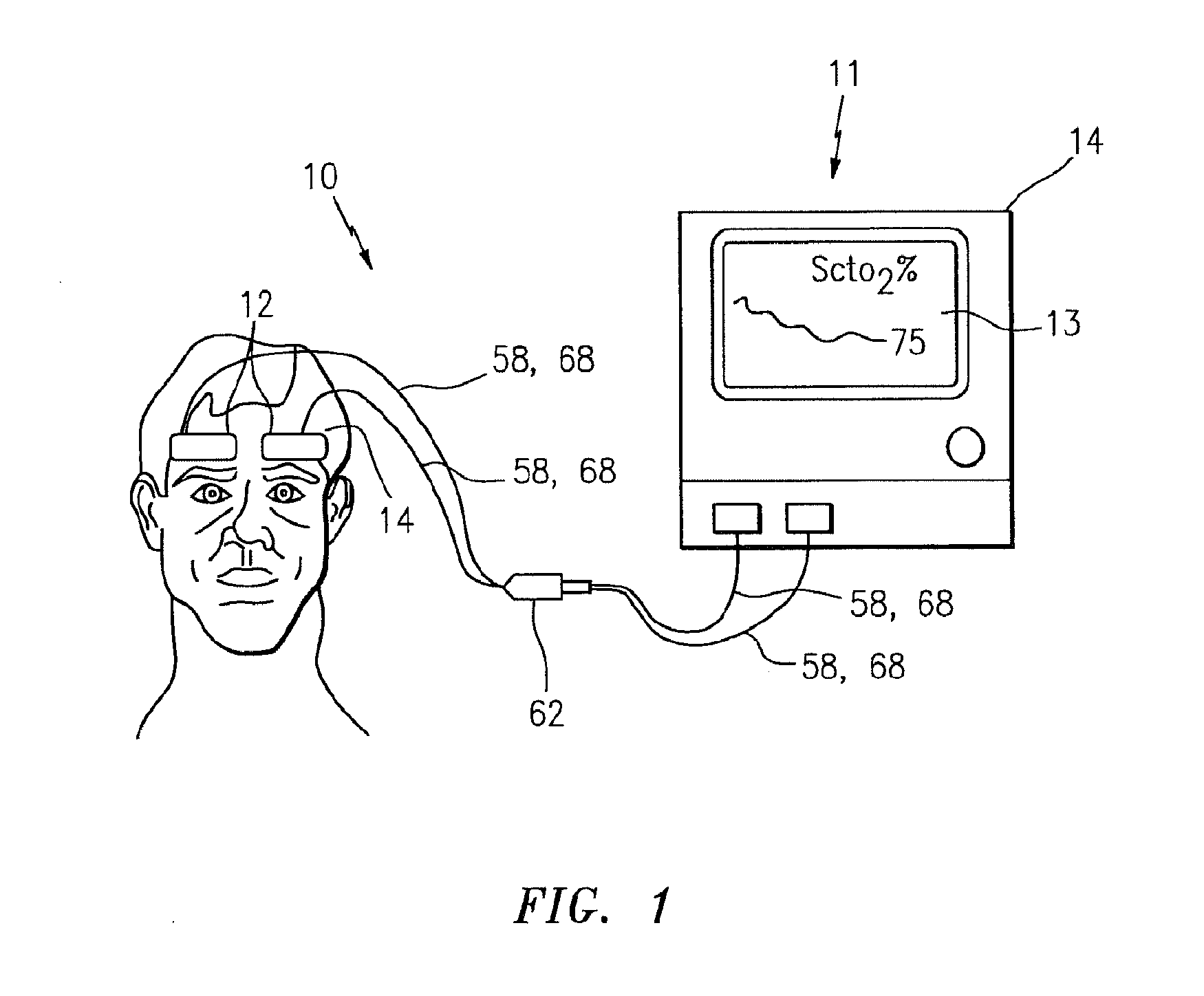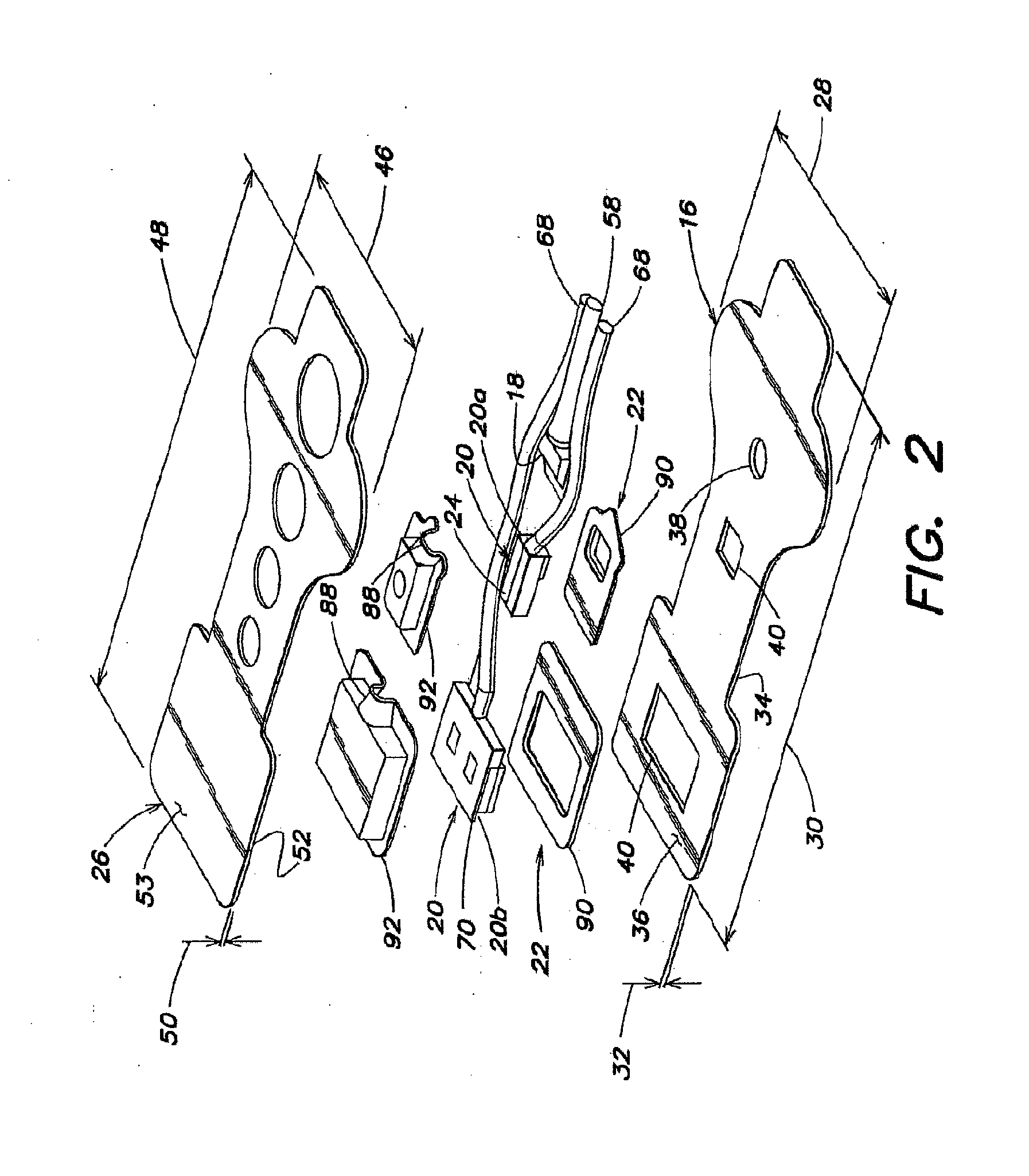Nirs sensor assembly including electrically conductive and optically transparent EMI shielding
a sensor and optical shielding technology, applied in the field of nirs sensor assembly including electrically conductive and optically transparent emi shielding, can solve the problems of nirs sensor cost to manufacture, signal interference from electromagnetic interference sources, and the inability to yield useful information with respect to cerebral oxygenation, etc., to achieve the effect of reducing undesirable nois
- Summary
- Abstract
- Description
- Claims
- Application Information
AI Technical Summary
Benefits of technology
Problems solved by technology
Method used
Image
Examples
Embodiment Construction
[0026]Referring now to the drawings, a near infrared spectroscopy (NIRS) system 10 includes one or more NIRS sensor assemblies 12 connected to a base unit 11. The base unit 11 includes a display 13, operator controls, and a processor 14 for providing signals to and / or receiving signals from the NIRS sensor assembly(ies) 12. The processor 14 is adapted (e.g., programmed) to selectively perform the functions necessary to operate the sensor(s). It should be noted that the functionality of the processor 14 may be implemented using hardware, software, firmware, or a combination thereof. A person skilled in the art would be able to program the processor 14 to perform the functionality described herein without undue experimentation. For purposes of providing a detailed description of the present NIRS sensor assembly 12, the sensor assembly 12 will be described herein as being used in connection with the NIRS system described in U.S. Pat. No. 6,456,862 and U.S. Pat. No. 7,072,701, which are...
PUM
 Login to View More
Login to View More Abstract
Description
Claims
Application Information
 Login to View More
Login to View More - R&D
- Intellectual Property
- Life Sciences
- Materials
- Tech Scout
- Unparalleled Data Quality
- Higher Quality Content
- 60% Fewer Hallucinations
Browse by: Latest US Patents, China's latest patents, Technical Efficacy Thesaurus, Application Domain, Technology Topic, Popular Technical Reports.
© 2025 PatSnap. All rights reserved.Legal|Privacy policy|Modern Slavery Act Transparency Statement|Sitemap|About US| Contact US: help@patsnap.com



